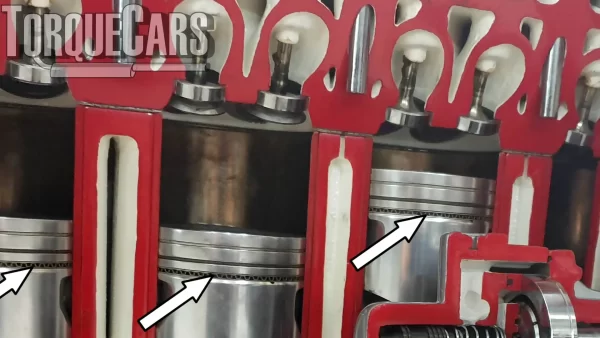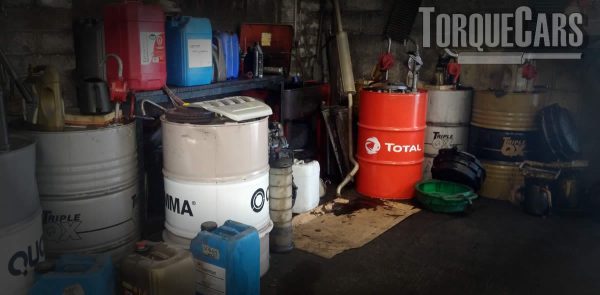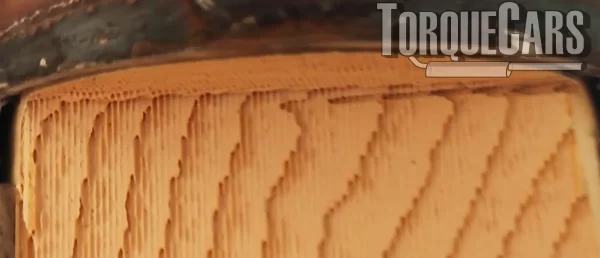Why & How Cold Starts Damage Engines
"The Critical Phase: Engine Wear During Startup and Warm-Up"
How damaging is it to an engine when you first start it up? What are the primary areas and problems causes by cold starts?
This article will explore this topic and help you discover the best way to warm up your cars engine to minimize the problems associated with cold start wear.
Every car enthusiast knows that taking care of your engine is essential for its longevity and performance.
However, there's a critical phase during each drive that often goes overlooked but can significantly impact your engine's health – the startup and warm-up process.
When cats wake up the first thing they do is stretch, warming up those muscles. Athletes know the importance of warming up their muscles before they start to use them in anger.
In this article, we'll dive into the reasons why most engine wear occurs during this warm up phase, focusing on the expansion of engine parts, oil temperatures, and the potential damage that can happen if you push your engine too hard when it's still cold.
I'll also explain the mistake many people make when warming up the engine, as common myths and misunderstandings can cause damage.
Please Watch my Cold Start Guide for an overview of this article.Thermal Expansion:
When you start your engine from a cold state, the internal components are also cold. Metals contract in colder temperatures, which means the engine's parts are slightly smaller than their nominal size.
As you start the engine and it warms up, these components gradually heat up and begin to expand. This expansion process is one of the primary causes of engine wear during startup as parts move around outside their warm tolerances.
Our focus here is on the crank, pistons, piston rings and connecting rods and how they interact with the cylinders when cold.
Forged parts will generally expand more, so it is more important these are given a chance to expand properly, they will slap "rattle" more when the engine is cold than non forged parts.
When the engine is cold, the piston and cylinder wall clearances are larger, and all engines to some degree experience Piston slap.
Piston slap is generally considered normal in many engines to some extent, especially during cold starts. It's more common in engines with larger bore sizes, and it tends to decrease as the engine warms up.
However, excessive piston slap can be a sign of worn piston rings, cylinder wall damage, or other issues. If the noise is persistent or becomes very loud, it's advisable to have the engine inspected by a qualified mechanic to ensure there are no underlying problems that need attention.

Pistons:
Contraction and Expansion: In a cold engine, the pistons are at a lower temperature and contracted. As the engine starts and warms up, the pistons gradually heat up and expand. This expansion can cause them to become slightly larger in diameter.
Increased Clearances: When pistons are cold and contracted, the clearances between the piston and cylinder walls are larger. As the pistons expand with heat, these clearances decrease.
Reduced Friction: The initial larger clearances between the pistons and cylinder walls may result in slightly more play, which can lead to increased friction. As the engine warms up and the pistons expand to their nominal size, the clearances return to normal, and friction is reduced.
Rings:
Contraction and Expansion: Piston rings, like the pistons, also contract in the cold. They create a seal between the piston and the cylinder wall, helping to contain the combustion gases and maintain compression.
Initial Leakage: In a cold engine, the contracted rings may not seal perfectly due to the larger clearances, allowing some combustion gases to bypass them. This can lead to reduced compression and power during the initial phase of startup and warm-up.
Improved Sealing: As the rings heat up and expand along with the pistons, they create a better seal against the cylinder walls. This improved sealing results in better compression, efficiency, and overall engine performance.
You may be burning a little oil if the pistons and rings are not fully expanded and bedded in to the cylinder wall.
Oil Temperature:
Engine oil plays a crucial role in reducing friction and wear within the engine. However, during a cold start, the oil is also cold and viscous, which means it flows less efficiently.
In this state, the oil cannot provide proper lubrication to the engine's moving parts. As the engine warms up, the oil becomes less viscous and flows more freely, ensuring that critical engine components are well-lubricated.

Damaging Effects of Cold Starts:
Now, let's discuss what can go wrong if you push your engine too hard when it's still cold:
Increased Friction: The cold engine components rubbing against each other without adequate lubrication result in increased friction.
This friction leads to premature wear and can even cause damage to the engine.
Poor Fuel Combustion: Cold engines have a less efficient fuel combustion process, which can result in unburnt fuel residue accumulating in the engine. Over time, this can lead to carbon deposits and reduced engine efficiency.
Stress on Engine Components: Revving a cold engine too quickly puts added stress on various components like the piston rings, cylinder walls, and bearings. This stress can cause micro-damage that accumulates over time.
Reduced Fuel Efficiency: Cold engines consume more fuel, as the fuel doesn't combust as efficiently during the warm-up phase. This not only costs you more at the pump but also harms the environment & damages the Cat & blocks the DPF.
Even diesels are affected by the sooty start up inefficiencies especially with the DPF (Diesel Particulate Filter) filters. Let's break down the impact on each of these emission control components:
Running rich in an open loop until the engine warms up can have negative consequences for both the catalyst and EGR/intake areas of the engine.
Catalytic Converter:
Rich Fuel Mixture: Running rich means that there is an excess of fuel compared to the amount of air in the combustion process. This can result in unburned fuel reaching the catalytic converter.
Catalyst Overheating: The unburned fuel can ignite inside the catalytic converter, causing it to overheat. Prolonged exposure to high temperatures can damage the catalyst, reducing its efficiency and lifespan.
Reduced Emission Reduction: A damaged or inefficient catalytic converter cannot effectively convert harmful exhaust gases (such as carbon monoxide and unburned hydrocarbons) into less harmful substances. This can lead to higher emissions and potentially cause your vehicle to fail emissions tests.

DPF (Diesel Particulate Filter) Filters:
Unburnt Fuel Mixture and Excessive Soot: In diesel engines, running when cold can lead to incomplete combustion, resulting in the production of excess soot particles in the exhaust. The cold engine affects atomization of the fuel and compression will be reduced until the cylinders/rings and pistons have expanded and mated together.
Clogging and Regeneration Issues: Excessive soot production can clog the DPF filter, reducing its ability to capture and burn off soot particles. It can also impede the regeneration process, which is necessary to clean the filter. This may trigger warning lights and require manual regeneration procedures or even DPF replacement in severe cases.
To prevent these issues, it's essential to let your engine warm up properly before driving hard. Operating your vehicle in a rich mixture state for an extended period can be harmful to emission control components, leading to reduced performance, increased emissions, and potential repair costs.
Proper maintenance and adherence to manufacturer-recommended warm-up procedures can help mitigate these problems and keep your vehicle's emission control systems in good working condition.
Conclusion: In conclusion, the startup and warm-up phase of your engine is a critical time where most engine wear occurs.
The expansion of engine parts, cold engine oil, and the potential for damage are all interconnected. To protect your engine's health, it's crucial to let it warm up before pushing it too hard.
By doing so, you'll ensure smoother operation, increased longevity, and improved fuel efficiency for your beloved car.
Warm Up Instructions.
Getting the engine to operating temperature is a key to prolonging engine life. It will depend on the types of temperature you are experiencing so there are some regional variations.
Bear in mind that cold areas like Siberia and Scandinavia generally have different coolant and oil grade requirements to help with those extremes.
Hybrids still need to be driven gently when the engine is cold, but they are designed to cope with this and generally have good heat management and inbuilt protections for the engines. In my opinion is is better to start and drive an engine gently than rely on an idling period.
Don't
- Leave the car idling (gentle loads on the engine will help warm up times)
- Drive At High RPMS (In most cars this is around 3000 rpms or over 1/3 of the rev range)
Do
- Get in and drive the car around (as soon as your windows are clear of snow and ice obviously)
- Use light loads, lower RPMS and gentle throttle inputs.
- For most cars you will aim for around 1500-2000rpms
Idling a car is inefficient, an engine ticking over is creating a lot of moisture inside, you'll notice this collecting in the exhaust pipe. It takes a lot longer to warm up when idling, so effectively the car is running whilst cold for longer durations.
You really want the engine to warm up quickly a 10 minute idle warm up is far more damaging than a 4 minute drive around at 1500-2000rpms.
High RPMS can damage the engine, the piston slap will cause excessive wear and tear. I've seen pistons scored and cylinder walls damaged through this bad habit.
So, the next time you start your engine, remember the importance of a gentle warm-up – your engine will thank you for it!
If you have a turbo engine it is equally important to allow a cool down phase before you shut off the engine after some spirited driving. I've another video that covers this topic in more detail.
Please Check out my YouTube channel, we're regularly adding new content...
PLEASE HELP: I NEED YOUR DONATIONS TO COVER THE COSTS OF RUNNING THIS SITE AND KEEP IT RUNNING. I do not charge you to access this website and it saves most TorqueCars readers $100's each year - but we are NON PROFIT and not even covering our costs. To keep us running PLEASE Donate here
If you liked this page please share it with your friends, drop a link to it in your favourite forum or use the bookmarking options to save it to your social media profile.
Feedback - What do You Think?
Please use our forums if you wish to ask a tuning question, and please note we do not sell parts or services, we are just an online magazine.
Help us improve, leave a suggestion or tip
Please watch this video and subscribe to my YouTube channel.

 Click to accept YouTube Cookies & Play.
Click to accept YouTube Cookies & Play.